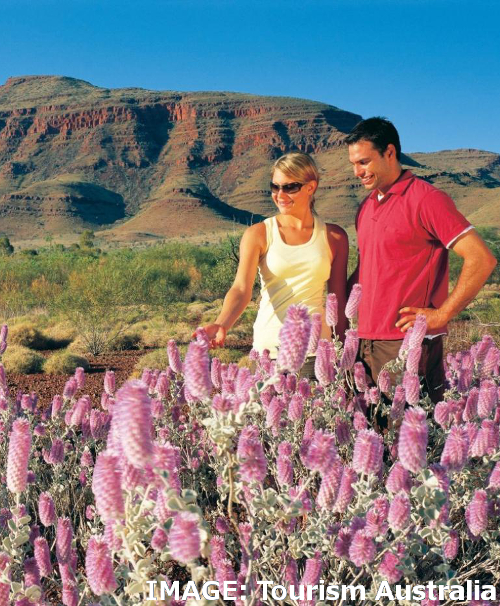Flower damage placed at tourists' feet
 Experts are encouraging anyone thinking of stepping out to enjoy colourful wildflowers popping up around the country to be mindful of the potential damage trampling can have.
Experts are encouraging anyone thinking of stepping out to enjoy colourful wildflowers popping up around the country to be mindful of the potential damage trampling can have.
Murdoch University Associate Professor David Newsome says his studies have shown that vegetation height and cover measured at sites frequented by wildflower tourists declines in response to use by tourists.
He also conducted some trampling experiments recently, and found some test trampling areas experience a reduction of over 20cm in the height of the vegetation immediately following trampling.
“The message here is that we must enjoy our wildflowers, but also realise that they are sensitive to damage,” Associate Professor Newsome said.
The research looked at wildflower tourism in the national parks of the southwest of Western Australia; a global diversity hotspot, and the potential damage this industry could have on the flora on which it depends if the visitor does not stick to pathways and ends up accidently trampling the flora.
The results of the research place a high emphasis on the importance of education for the tourism industry in regard to recreational trampling impacts on biodiverse shrubland communities in particular.
The underlying message from Dr Newsome is to enjoy the flowers but also be aware of where you are treading.
In other words - realise that these plants are sensitive to damage, may take years to recover if damaged, and so they deserve respect.
“We encourage the public to be careful where they put their feet whilst out and about this spring and enjoying the wildflowers,” said the expert in wildlife tourism.
Tourism is potentially one of a group of threatening processes for the southwest global biodiversity hotspot, that also include climate change, invasive weeds, feral animals, altered fire regimes and the spread of fungal pathogens.
The wildflower season in Western Australia, which attracts thousands of tourists and tour groups each year, generally starts in June in the north and finishes in the south in November.







 Print
Print